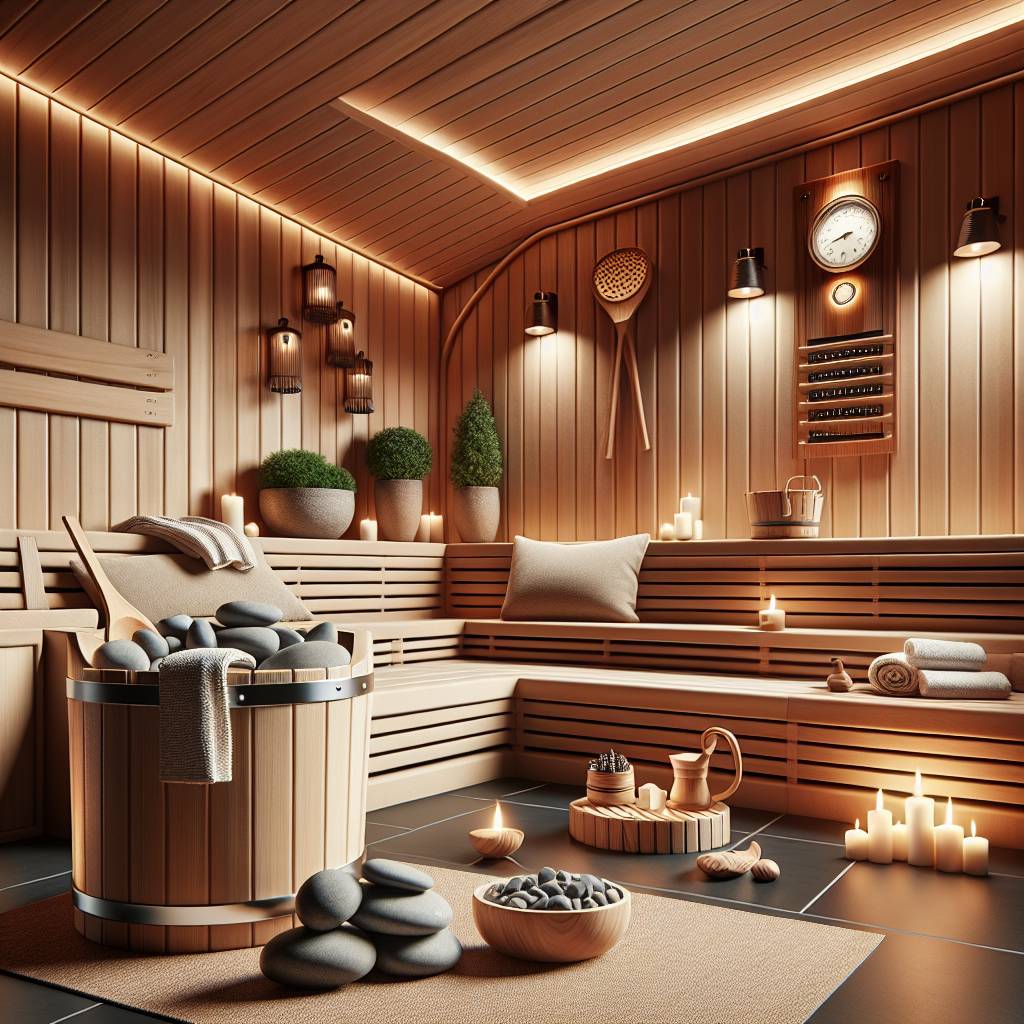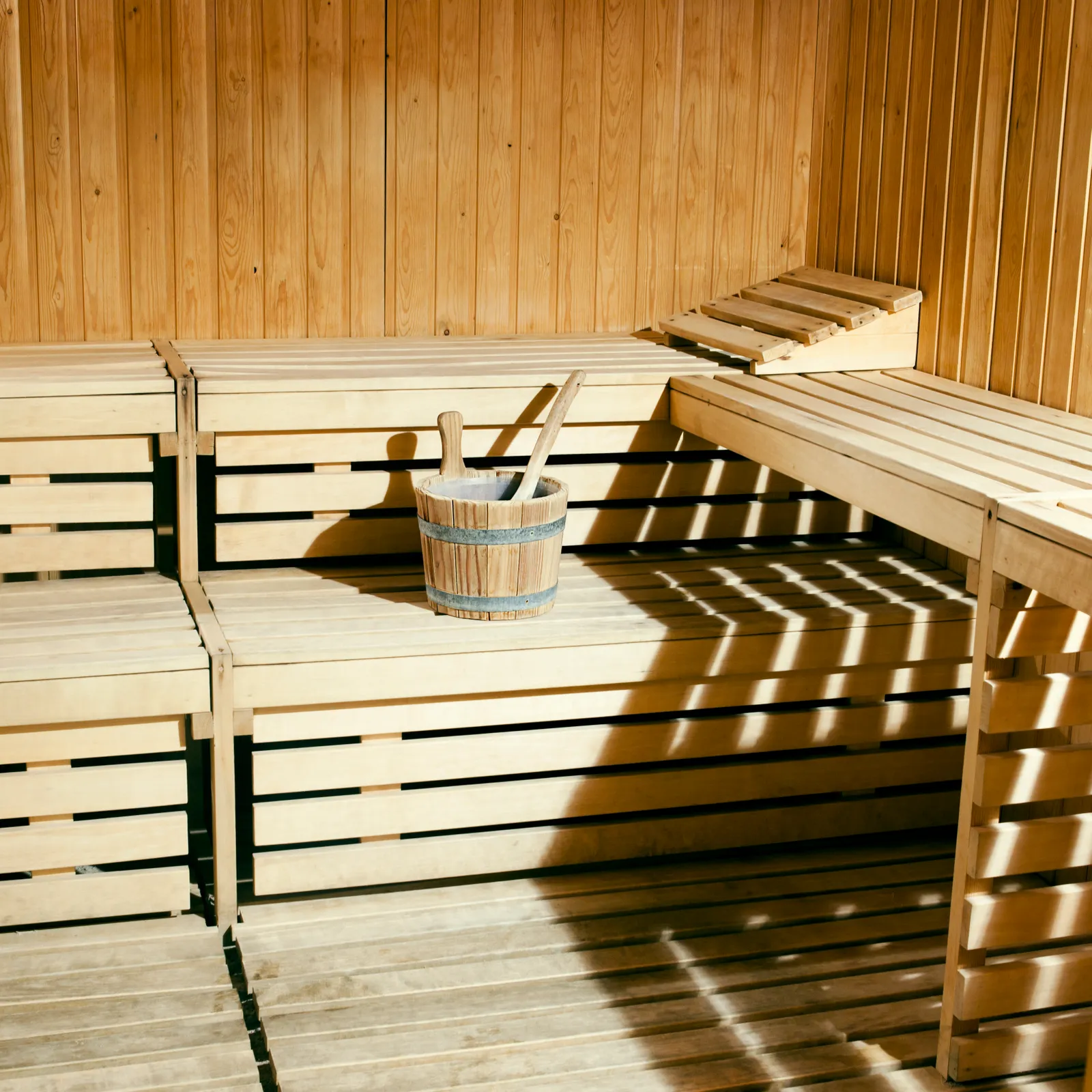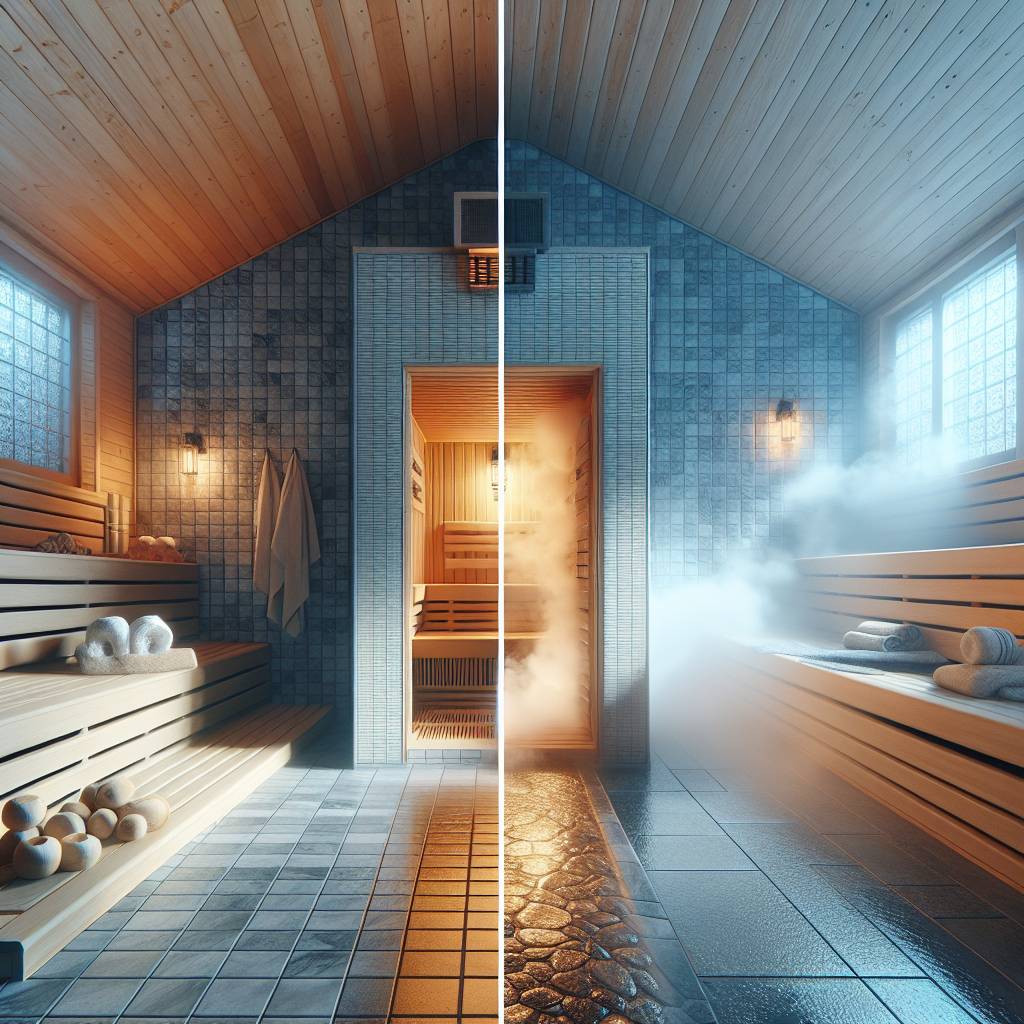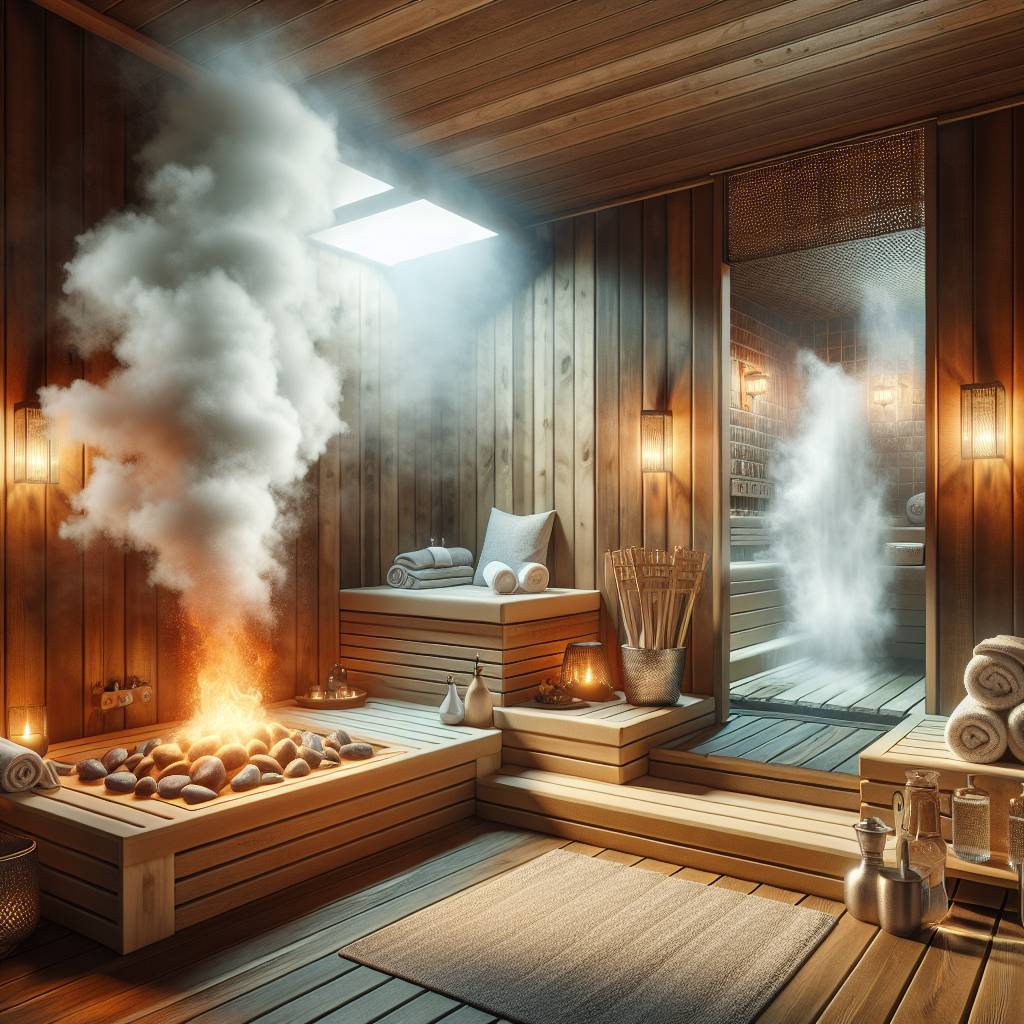Discover the stark contrast between a dull sauna and a revitalized retreat by mastering how to clean cedar bench boards and treat wood surfaces in a sauna with a natural treatment oil product. Elevate your sauna experience by learning the essential techniques to preserve and enhance the beauty of the wood while ensuring longevity. Uncover the secrets to protect your sauna from moisture, heat, and wear, transforming it into a sanctuary of relaxation and rejuvenation.
Enhance the aesthetics and durability of your sauna with expert tips on treating wood surfaces using paraffin oil as a treatment agent. Embrace the warmth and natural charm of a well-maintained sauna through simple yet effective maintenance practices. Elevate your self-care routine with a rejuvenated sauna ambiance that radiates comfort and tranquility.
Key Takeaways
- Understand the importance of treating wood surfaces in saunas to prevent damage and prolong their lifespan.
- Prepare the wood surfaces properly by sanding and cleaning before applying any treatment for better adhesion and effectiveness.
- Treat sauna benches with suitable agents like sauna oils or sealants to protect them from heat, moisture, and wear.
- Choose treatment agents specifically designed for sauna use to ensure they can withstand the sauna environment and provide optimal protection.
- Take special considerations into account, such as ventilation, temperature, and drying times, when treating wood surfaces in saunas.
- Maintain treated wood surfaces regularly by cleaning them with gentle products and reapplying treatments as needed to keep them in top condition.
Understanding Wood Treatment in Saunas
Importance of Treatment
Wood treatment in saunas is crucial for longevity as it protects the wood from moisture and heat damage. Regular treatment prevents warping, cracking, and discoloration, maintaining the sauna’s aesthetic appeal. Untreated wood in saunas can harbor bacteria, compromising hygiene and safety.
Wood Types and Treatments
Different types of wood used in saunas, like cedar and hemlock, have specific treatment requirements, such as oil. Cedar, known for its aromatic properties, requires oil-based treatments for protection. Hemlock, on the other hand, benefits from water-based sealants. Understanding how each wood type reacts to treatments ensures effective protection against heat and humidity.
- Sauna Wood Types:
- Cedar
- Hemlock
- Spruce
- Treatment Options:
- Oil-based treatments
- Water-based sealants
- Heat-resistant coatings
Treatment Benefits
Treating wood surfaces in a sauna offers numerous benefits. It increases durability by protecting the wood from moisture and heat exposure. Treatments enhance the natural beauty of the wood, bringing out its unique grain patterns. Regular treatments also ensure resistance to wear and tear, extending the sauna’s lifespan.
- Benefits of Wood Treatment:
- Increased durability
- Enhanced aesthetics
- Longevity
Preparing for Treatment
Cleaning Surfaces
Proper cleaning is crucial before treating wood in a sauna to ensure the treatment’s effectiveness. Begin by assessing the level of dirt on the sauna benches. Use a mild detergent or vinegar solution to clean lightly soiled surfaces. For heavily soiled areas, consider using a wood cleaner. Sanding the wood is essential to remove grime buildup and create a smooth surface for treatment application.
Selecting the Right Agent
Choosing the correct treatment agent is vital for maintaining sauna wood surfaces. Paraffin oil is a popular choice due to its ability to penetrate the wood fibers, providing protection against moisture and heat. Before applying the treatment agent, conduct a patch test on a small inconspicuous area to ensure compatibility and desired results.
Tools Needed
To treat wood surfaces effectively in a sauna, you will need specific tools. Brushes are ideal for applying treatment agents evenly, while sponges help in spreading the product smoothly. Lint-free cloths are essential for wiping off excess treatment and achieving a polished finish. After use, dispose of any used rags and sponges properly to prevent potential safety hazards.
Treating Sauna Benches
Essential Steps
To prepare sauna benches for treatment, start by sanding the surfaces to remove any existing finishes or dirt. Next, clean the benches thoroughly to ensure proper adhesion of the treatment oil. Finally, ensure the benches are completely dry before proceeding.
Applying thin layers of oil evenly is crucial for effective protection and a smooth finish on sauna benches. By doing so, you prevent over-saturation of the wood and allow the oil to penetrate evenly. This ensures long-lasting results and enhances the natural beauty of the wood.
Treating both sides of the wood surfaces is essential for comprehensive protection against moisture and heat in a sauna. By covering all sides, you prevent uneven wear and potential damage over time. This practice prolongs the lifespan of your sauna benches.
Applying Treatment
When applying treatment oil to sauna wood surfaces, use brushes, sponges, or lint-free cloths for even distribution. Ensure that the entire surface is covered uniformly to prevent patchy areas that may be prone to damage. This method guarantees thorough protection.
Thorough coverage is key when applying treatment oil to sauna benches. By following correct techniques, you ensure that every inch of wood receives adequate protection. This step safeguards against wear and tear, preserving the quality of your sauna benches.
Allowing the treatment to dry properly is crucial before using the sauna. By giving it sufficient time to cure, you maximize its effectiveness in protecting the wood surfaces. This ensures durability and maintains the aesthetics of your sauna benches.
Drying and Curing
After treating wood surfaces in a sauna, let them dry for 24 hours before heating the sauna. This waiting period allows the treatment to set properly and ensures optimal performance. By adhering to this timeline, you enhance the longevity of your sauna benches.
Proper drying and curing are essential steps in maintaining treated wood surfaces in a sauna. Heat plays a vital role in completing the treatment process effectively by aiding in curing the oil. This final stage solidifies the protection and enhances the durability of your sauna benches.
Choosing Treatment Agents
Agent Types
When treating wood surfaces in a sauna, it’s crucial to explore different treatment agents available. Products like WOODCARE.GUIDE Paraffin Oil and Sauna Care offer specific properties beneficial for maintaining sauna wood. Choosing the right treatment agent directly impacts the wood’s longevity and appearance.
- WOODCARE.GUIDE Paraffin Oil
- Sauna Care
Certain treatment agents provide dirt-repellent properties, protecting wood from moisture and dirt accumulation. Opting for such products ensures easier maintenance of sauna wood surfaces, enhancing their durability and aesthetic appeal.
Dirt-Repellent Options
Discovering treatment agents with dirt-repellent properties is essential for preserving sauna wood surfaces. These products create a protective barrier against moisture and dirt, preventing damage and simplifying cleaning routines.
- Protective barrier against moisture
- Prevents damage
Choosing eco-friendly treatment options for sauna wood maintenance contributes to sustainable practices. Eco-conscious treatment agents not only safeguard users but also minimize environmental impact, reducing the carbon footprint associated with sauna upkeep.
Eco-Friendly Choices
Exploring environmentally friendly treatment options aligns with sustainable sauna maintenance practices. By opting for eco-conscious products, users prioritize safety while promoting eco-friendly habits that benefit both individuals and the environment.
- Benefits of Eco-Friendly Choices:
- Safety for users
- Reduced environmental impact
- Importance of Sustainable Practices:
- Minimized carbon footprint
- Long-term environmental benefits
Special Considerations
Thermally Modified Wood
Thermally modified wood offers enhanced durability and stability for sauna construction. This type of wood goes through a high-temperature treatment process that alters its properties, making it more resistant to moisture and decay. Sauna enthusiasts prefer thermally modified wood for its long-lasting qualities, ensuring the sauna structure remains intact over time.
Frequency of Maintenance
Regular maintenance is crucial for treating wood surfaces in a sauna. The frequency of treatments depends on how often the sauna is used and the number of users. Consistent maintenance routines help prevent issues like mold growth and wood deterioration, ensuring the sauna remains in top condition throughout the year.
- Pros of Thermally Modified Wood:
- Enhanced durability
- Increased stability
- Resistance to moisture and decay
- Cons of Infrequent Maintenance:
- Risk of mold growth
- Wood deterioration
- Compromised structural integrity
Disposing of Tools
When disposing of tools used in the treatment process, it’s essential to handle oily materials like rags and sponges with caution. These materials can pose a fire hazard if not properly managed. By following safe disposal practices, such as sealing oily items in a metal container or soaking them in water before disposal, you can reduce the risk of accidental fires in your workspace.
- Safe Disposal Practices:
- Seal oily materials in a metal container
- Soak rags and sponges in water before disposal
- Store used tools away from heat sources
Maintenance Tips
Regular Cleaning
Regular cleaning is essential for maintaining the pristine condition of wood surfaces in a sauna. Frequent cleaning routines prevent dirt buildup and moisture retention, which can lead to wood deterioration. The recommended cleaning frequency varies based on sauna usage and the level of dirt accumulation. It is advisable to clean the wood surfaces weekly for saunas used regularly and monthly for less frequent use.
To complement treatment efforts and ensure long-term preservation of the wood, regular cleaning is crucial. By removing dirt, sweat, and other residues promptly, you prevent these substances from seeping into the wood and causing damage. Regular cleaning helps maintain the aesthetic appeal of the sauna by keeping the wood surfaces clean and vibrant.
Inspection Schedule
Establishing an inspection schedule is key to monitoring the condition of wood surfaces in the sauna. Regular inspections allow you to detect early signs of wear, damage, or changes in the wood’s appearance. By conducting thorough inspections at set intervals, you can address any issues promptly before they escalate.
Scheduled inspections are vital for proactive maintenance of sauna wood surfaces. By identifying problems early on, such as cracks, warping, or mold growth, you can take immediate corrective actions to prevent further damage. Monitoring the condition of the wood through inspections helps ensure that the sauna remains safe, functional, and visually appealing.
Repair Techniques
Effective repair techniques are essential for addressing minor damages on sauna wood surfaces. Scratches, dents, or discoloration can detract from the overall appearance of the wood and compromise its integrity. Learning how to repair these issues promptly is crucial for preserving the beauty and durability of the sauna.
Timely repairs play a significant role in preventing further deterioration of the wood. By addressing minor damages promptly, you can prevent them from worsening and requiring more extensive repairs in the future. Whether it’s filling in scratches, sanding out dents, or refinishing discolored areas, timely repairs help maintain the wood surfaces in optimal condition.
Closing Thoughts
In treating wood surfaces in your sauna, understanding the process, preparing adequately, selecting the right treatment agents, and considering special factors are crucial. By following these steps diligently and maintaining your sauna regularly, you ensure the longevity and safety of your wooden surfaces. Remember, a well-maintained sauna not only enhances your relaxation experience but also adds value to your property.
Now that you have the knowledge to treat wood surfaces in your sauna effectively, take action and implement these tips. Your diligence will pay off in the form of a durable and inviting sauna environment for you and your guests to enjoy. Keep up with maintenance routines to preserve the beauty and functionality of your sauna for years to come.
Frequently Asked Questions
How important is wood treatment in saunas?
Wood treatment in saunas is crucial to prevent mold, mildew, and rot caused by the high humidity levels. It also enhances the wood’s durability and maintains its appearance over time.
What are the key steps in preparing for wood treatment in saunas?
Preparing for wood treatment involves cleaning the surfaces thoroughly, sanding to remove any existing finish, and ensuring the area is well-ventilated for application of treatment agents.
Which treatment agents are recommended for sauna benches?
For sauna benches, it’s best to use natural oils like linseed or tung oil, as they are heat-resistant and safe for skin contact. These oils penetrate the wood, providing protection and a natural finish.
Are there any special considerations when treating wood surfaces in a sauna?
When treating wood surfaces in a sauna, ensure the products used are heat-resistant and non-toxic. Consider the frequency of sauna use and choose treatments that can withstand high temperatures and humidity levels.
What are some maintenance tips for preserving treated wood surfaces in saunas?
To maintain treated wood surfaces in saunas, regularly clean with a mild detergent and water, avoid harsh chemicals that can damage the treatment, and periodically reapply the treatment agent to uphold protection and aesthetics.






